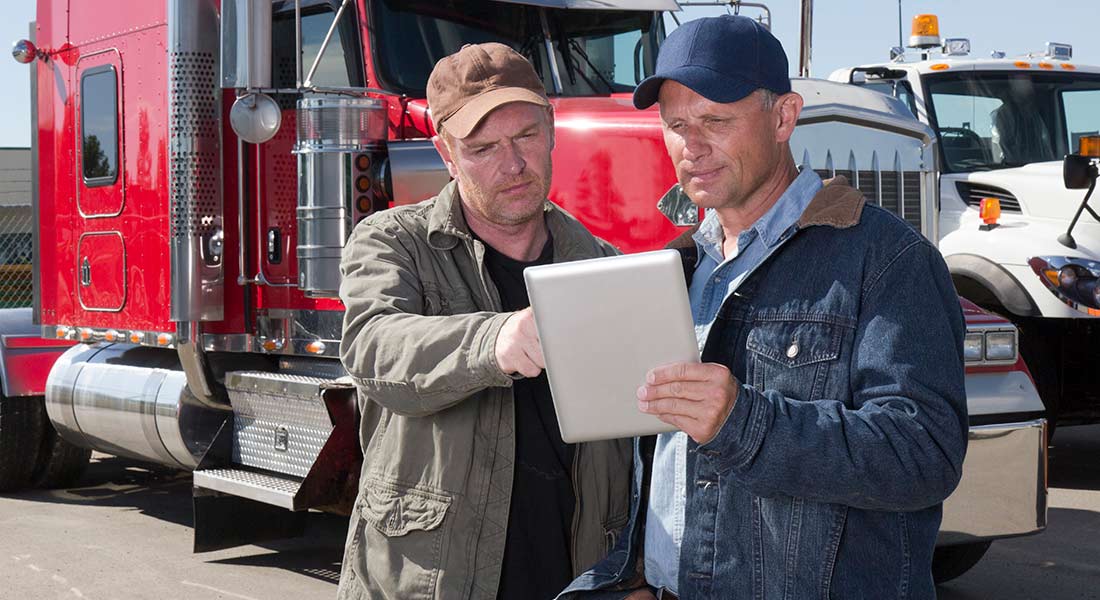Estimated reading time: 4 minutes
Technology is transforming the trucking industry like never before. GPS tracking, computerized truck monitoring, cloud-based fleet management, onboard diagnostics, and telematics are technologies that are moving the trucking industry forward. Technology is also being used to connect owner-operators and trucking companies with freight brokers and shippers. But, of course, we are talking about truck load boards, also referred to as freight load boards. So what is a truck load board? This Balboa Capital blog article has the information you need to know about truck load boards, including how they work and how they can help grow your trucking business.
What is the history of load boards?
Before the advent of the Internet, WiFi, cloud computing, smartphones, tablets, and laptops, finding information about loads and available trucks was challenging and time-consuming. First, trucking companies and dispatchers would post notes on truck stop bulletin boards or at roadside cafes and restaurants for drivers to see. Then, the drivers took turns making long-distance calls from a pay phone to ask about the particulars of the loads and get them lined up.
As mentioned on the DAT® Freight and Analytics website, truck load boards began in the late 1970s. A truck stop in the Pacific Northwest introduced an alternative to paper-based note cards: a monitor for truck drivers to view upcoming loads. This was more accessible and efficient than sifting through handwritten or typed note cards that adorned the walls at truck stops, cafes, and restaurants. Computerized load boards made their debut with the advent of the Internet, and today load boards are available online and via mobile apps.
There are so many load boards to choose from it can be difficult for owner-operators to find one that meets their needs, saves them time and money, and offers the best features and services.
How do truck load boards work?
A load board is a web-based app that matches the available trucks with the available loads. Truck drivers can access a load board app with a secure Internet connection from any smartphone or tablet. In addition, there are websites and online forums that list freight-forwarding ads. So, truck drivers have many options when it comes to finding loads.
Load boards feature a list of shippers and receivers, what they are looking for, and where they are located. Truck drivers can use this information to find freight, while shippers and receivers can use it to find drivers for their freight needs. The driver and company can agree on pick-up times and drop-off locations for their cargo when there is a match.
What is an example?
To illustrate how a load board works, here is an example. Kyle is an owner-operator in Indiana and has several contacts that keep him on the road in neighboring states. However, Kyle heard from other owner-operators that hauling loads to New York and Massachusetts offers more pay.
So, he downloaded a load board app to his mobile phone, created an account, and included information about his business and truck and desired load-hauling destinations (New York and Massachusetts). Not soon after that, Kyle found available loads for these two locations, along with routes, and he hit the road. In addition, he was contacted by brokers who use the same load board, which resulted in more jobs and revenue.
How much do load boards cost?
Access to available loads can help new and long-established truck drivers find good-paying jobs and maximize their earnings. Plus, load boards can help truck drivers land more customers who might hire them again in the future. These are some of the main reasons why they invest in load boards. The majority of load boards have monthly or annual subscription fees. The monthly subscription fee for load boards ranges from $25 to $175.
Each load board provider’s primary goal is to help owner-operators and trucking companies find loads from freight brokers and shippers. When a connection is made, it is a win-win for all parties involved and helps ensure the delivery of goods, foods, and other products to their intended locations. But some load providers also offer additional features and options. These include instant bidding, which lets drivers bid on loads based on what they feel the jobs are worth and integrated freight factoring, which facilitates faster payment to drivers. Other features may include advanced search functionality and filters, mileage and routing information, city, and state load counts, and truck driver broker reviews.
Are there free load boards?
Next, free load boards are also available to owner-operators, trucking companies, brokers, and shippers. The free load boards typically have fewer built-in features and capabilities than their paid counterparts and often require more screen time to locate a decent load. That said, most large freight brokers offer free access to their load boards, which opens the door to potential jobs for owner-operators and trucking companies.
Balboa Capital, a Division of Ameris Bank, is not affiliated with nor endorses DAT Freight and Analytics. The opinions voiced in this material are for general information only and are not intended to provide specific advice or recommendations for any individual.
